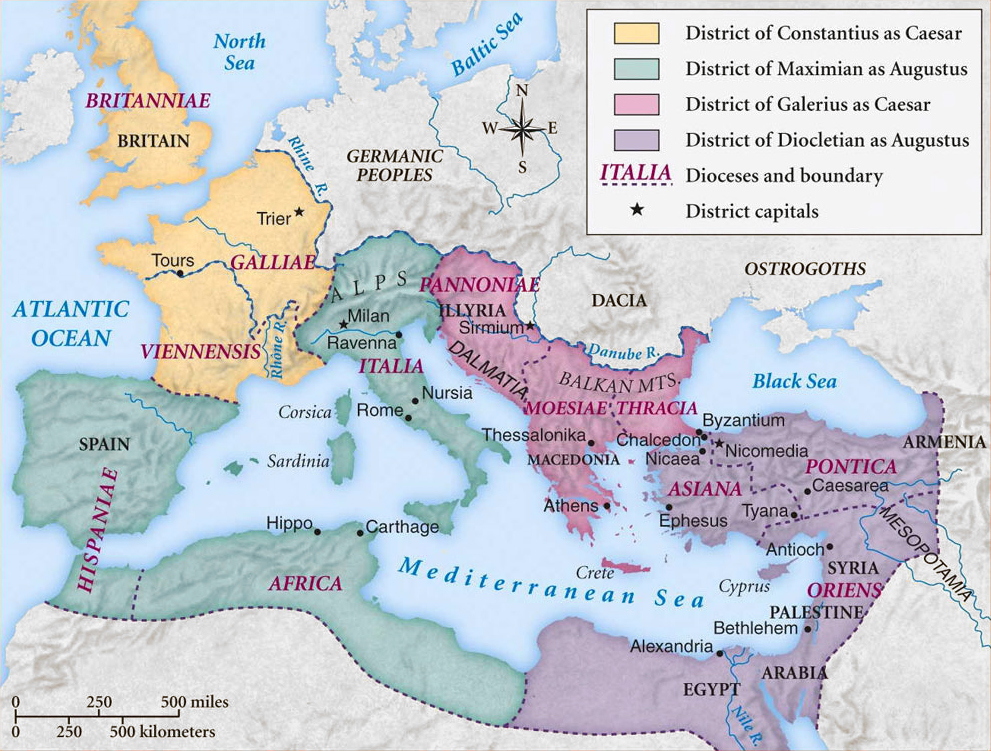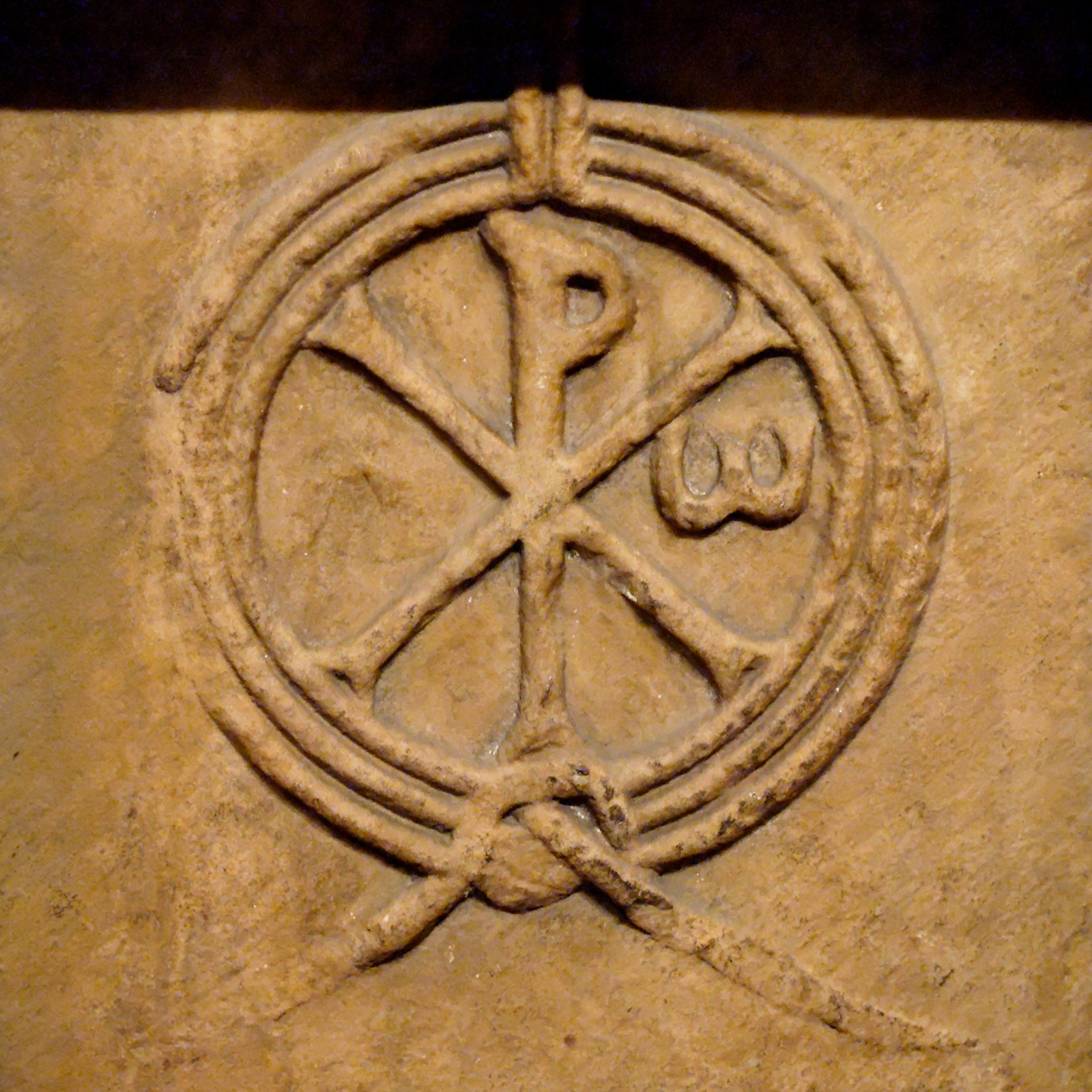
The Tetrarchate, established by Diocletian, served to regain some order and control of the enormous Roman Empire. However it also splintered it, forming a dissolution of identity within a single authority.
Upon their simultaneous abdication of their territories in 305 AD, Diocletian and Maximian handed the rule of East and West to their caesars (lesser rulers). The new Tetrarchy consisted of Galerius as the senior Emperor in this system, taking over Diocletian’s position in the East, and Constantius, who took control of the West. Under them Severus ruled as Constantius’ caesar and Maximinus, Maximian’s son, was caesar to Galerius.

The empire was split between four unequal rulers to enable the easier governance of the immense territories under their control.
If it seems complicated at this stage, the following years twisted the matter even further, as titles changed, abdicated emperors reclaimed their seats and wars were fought. Thanks to Constantine, the son of Constantius, the tetrarchy was abolished and an extremely complicated political situation was swept away to be replaced by a single ruler of a unified Roman Empire.
Constantine inherited the Western Empire from his father upon the latter’s death in York, Britain, in 306 AD. This began a series of events that came to be known as the Civil wars of the Tetrarchy. Below are detailed the two main wars and the victories within them that secured Constantine’s position as the sole Emperor.
 Listen Now
Listen Now1. The war of Constantine and Maxentius
A welcome invader
The war of Constantine and Maxentius was seen as a liberation effort by most of the Empire and as Constantine moved south to eradicate his enemy, the people welcomed him and his forces with open gates and celebrations.
Maxentius and Galerius had governed poorly in their time as rulers and had suffered riots in Rome and Carthage due to soaring tax rates and other economic issues. They were barely tolerated as rulers and Constantine was seen as the saviour of the people.
The Battle of the Milvian Bridge
Many battles across the Empire were waged, culminating at the Battle of the Milvian Bridge. Before the battle it is said that Constantine received a vision of the Chi-Ro and was told he would be victorious if he marched under this symbol of the Christian faith. The battle itself was joined along the banks of the Tiber, before Rome, and Constantine’s forces flew the Chi-Ro on their banners.
Maxentius’ forces were drawn up along the length of the river with their backs to the water. The battle was brief; Constantine launched a direct assault against Maxentius’s line with his cavalry, which broke in places. He then sent in his infantry and the rest of the line crumbled. A chaotic retreat across flimsy bridges of boats began and during the rout Maxentius fell into the Tiber and drowned.
 Watch Now
Watch NowConstantine was victorious and marched into Rome to jubilant celebration. Maxentius’ body was fished from the river and decapitated, his head paraded through the streets of Rome. Constantine was now the sole ruler of the entire Western Empire.
2. The war of Constantine and Licinius
The Edict of Milan
Licinius was the ruler of the Eastern Empire as Constantine took sole control of the West. Initially they forged an alliance in Milan in 313 AD. Importantly, the Edict of Milan was signed by the two emperors promising tolerance to all religions within the Empire, including Christianity which had faced savage persecution in the past.
The final civil war of the Tetrarchy
In 320 Licinius broke the Edict by oppressing Christians under his rule and this was the spark that ignited the final civil war. The war between Licinius and Constantine became an ideological clash as well as political. Licinius represented the older belief systems at the head of a pagan army supported by Goth mercenaries and Constantine embodied the new Christian empire as he marched into battle with the Chi-Ro emblazoned on banner and shield.
They met several time in open combat, first at the Battle of Adrianople, then the Battle of the Hellespont and Constantine won his final victory at the Battle of Chrysopolis on 18 September 324.

This Chi-Rho is engraved on an early twelfth century alter in France. The symbol Constantine bore into battle is made up of the first two Greek characters of the word ‘Christ’, X and P.
Emperor Constantine
At the end of this campaign the tetrarchy, which had been established two generations before, was abolished and Constantine reigned supreme over all of the Empire, uniting what has been essentially two separate empires until then. His rule would see a part of the Empire regain some of its former glory, but in doing so it would be changed forever.














